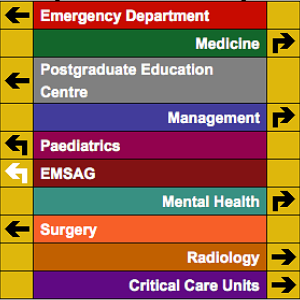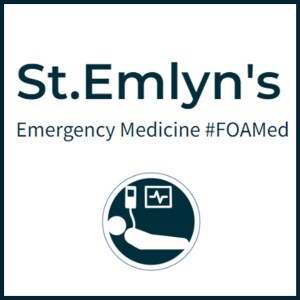
The CRASH-3 Trial: Revolutionizing Head Injury Management with Tranexamic Acid
The CRASH-3 trial, a landmark study in the field of emergency medicine, has brought significant attention to the potential role of tranexamic acid (TXA) in managing traumatic brain injury (TBI). As one of the largest randomized controlled trials ever conducted on head injury patients, its findings could reshape clinical practices globally, particularly in the pre-hospital and emergency department settings.
Overview of the CRASH-3 TrialThe CRASH-3 trial was designed to assess the efficacy of TXA in reducing mortality among patients with traumatic brain injury. TXA is an antifibrinolytic agent commonly used to prevent excessive bleeding in various medical scenarios, such as trauma, surgery, and postpartum hemorrhage. The question posed by CRASH-3 was whether TXA could also reduce deaths in patients who had suffered a TBI, a question that had remained unanswered despite the success of the CRASH-2 trial in managing extracranial bleeding.
Patient Population and Inclusion CriteriaThe trial focused on adults aged 16 years and older who had sustained a traumatic brain injury. To be included, patients needed to have either a Glasgow Coma Scale (GCS) score of 12 or lower or a positive CT scan indicating intracranial bleeding. Notably, patients with significant extracranial bleeding were excluded from the trial to specifically measure the effect of TXA on TBI outcomes.
A critical aspect of the trial was the timing of TXA administration. Initially, the protocol allowed TXA to be administered within eight hours of injury. However, as data from other studies like the WOMAN trial and CRASH-2 became available, suggesting that the benefits of TXA diminish after three hours, the protocol was adjusted. This change meant that the majority of patients received TXA within three hours of injury, a key factor in the study's final analysis.
Key Findings of the CRASH-3 TrialThe CRASH-3 trial enrolled 12,737 patients across 29 countries, making it one of the most extensive studies of its kind. The primary outcome measured was all-cause mortality at 28 days post-injury. The results showed that overall mortality was slightly lower in the TXA group (18.5%) compared to the placebo group (19.8%), although this difference was not statistically significant.
However, a pre-specified subgroup analysis provided more compelling evidence. When patients with a GCS of 3 and bilateral unreactive pupils (indicating very severe brain injury) were excluded, TXA demonstrated a more significant benefit. In this subgroup, the mortality rate was 12.5% in the TXA group versus 14% in the placebo group, a statistically significant reduction with a relative risk of 0.89. This finding suggests that TXA is particularly beneficial for patients with moderate head injuries (GCS 9-15) who are more likely to survive if bleeding is controlled.
Number Needed to Treat (NNT)One of the critical metrics for evaluating the effectiveness of a treatment is the number needed to treat (NNT). In the CRASH-3 trial, the NNT was 67, meaning that 67 patients would need to be treated with TXA to save one additional life at 28 days post-injury. For comparison, the NNT for aspirin in acute myocardial infarction is about 42, which is widely regarded as highly effective. An NNT of 67 is therefore quite favorable in the context of emergency medicine, particularly for a condition as serious as traumatic brain injury.
Timing of AdministrationThe CRASH-3 trial strongly reinforced the importance of administering TXA as early as possible after a head injury. The data indicated a 10% reduction in TXA’s effectiveness for every 20-minute delay in patients with mild to moderate head injury. This underscores the need for TXA to be administered in the pre-hospital setting, ideally by paramedics at the scene or en route to the hospital. Delaying treatment until after arrival at the emergency department or after conducting a CT scan may significantly reduce the drug's benefits.
Implications for Clinical PracticeThe results of the CRASH-3 trial suggest that TXA should be considered for all patients with moderate traumatic brain injury, particularly those with a GCS of 9 to 15 and confirmed intracranial bleeding. For patients with severe head injuries (GCS of 8 or less, or with bilateral unreactive pupils), the benefits of TXA are less clear, likely due to the severity of the primary brain injury.
Given the trial’s findings, it is recommended that TXA be integrated into clinical protocols for the management of head injuries. This is especially relevant in pre-hospital care, where early intervention is possible. TXA should be administered as soon as possible after the injury occurs, particularly in cases where a significant delay in getting to the hospital is expected.
Cost-Effectiveness and AccessibilityAnother important aspect of TXA is its cost-effectiveness. In the UK, a 1-gram dose of TXA costs approximately £1, making it an affordable treatment option for healthcare systems worldwide. This low cost makes TXA a viable option not only in high-income countries but also in low- and middle-income countries where healthcare resources are often limited. Given its affordability and the potential to save lives, TXA is an attractive option for widespread use in managing traumatic brain injury globally.
Considerations for Special PopulationsAlthough the CRASH-3 trial focused on adults, there is a strong rationale for extending its findings to pediatric patients. The physiology of traumatic brain injury in children is similar to that in adults, and there is no evidence to suggest that TXA would act differently in a younger population. As such, it would be reasonable to use TXA in children with TBI, following the same dosing guidelines adjusted for body weight.
Future Directions: Intramuscular TXA and BeyondWhile CRASH-3 has provided valuable insights, research into TXA’s potential uses continues. One area of interest is the development of intramuscular (IM) TXA, which could be particularly useful in pre-hospital settings where intravenous (IV) access is challenging. The possibility of an auto-injector for TXA is also being explored, which could simplify administration and further broaden its use, especially in resource-limited settings.
Conclusion: Implementing CRASH-3 Findings in PracticeThe CRASH-3 trial marks a significant advancement in our approach to treating traumatic brain injury. The evidence strongly supports the use of TXA, particularly in patients with moderate head injuries who receive the drug within three hours of injury. TXA is safe, cost-effective, and easy to administer, making it a valuable tool in both pre-hospital and hospital settings.
The implementation of CRASH-3’s findings into clinical practice could save thousands of lives annually, particularly in settings where early intervention is possible. As the emergency medicine community, we must act swiftly to incorporate these findings into our protocols and training, ensuring that TXA is used effectively to improve outcomes for patients with traumatic brain injury worldwide.
More Episodes
 2019-11-02
2019-11-02
 3.0k
3.0k
 2019-10-06
2019-10-06
 3.0k
3.0k
 2019-10-05
2019-10-05
 3.1k
3.1k
 2019-09-10
2019-09-10
 4.0k
4.0k
 2019-08-31
2019-08-31
 3.9k
3.9k
 2019-07-14
2019-07-14
 3.9k
3.9k
 2019-07-04
2019-07-04
 4.7k
4.7k
 2019-06-21
2019-06-21
 4.0k
4.0k
 2019-06-07
2019-06-07
 6.3k
6.3k
 2019-05-30
2019-05-30
 4.4k
4.4k
 2019-05-19
2019-05-19
 4.9k
4.9k
 2019-05-01
2019-05-01
 4.5k
4.5k
 2019-04-24
2019-04-24
 3.7k
3.7k
 2019-04-13
2019-04-13
 3.7k
3.7k
 2019-04-10
2019-04-10
 4.1k
4.1k
 2019-02-23
2019-02-23
 4.2k
4.2k
Create your
podcast in
minutes
- Full-featured podcast site
- Unlimited storage and bandwidth
- Comprehensive podcast stats
- Distribute to Apple Podcasts, Spotify, and more
- Make money with your podcast
It is Free
- Privacy Policy
- Cookie Policy
- Terms of Use
- Consent Preferences
- Copyright © 2015-2024 Podbean.com




